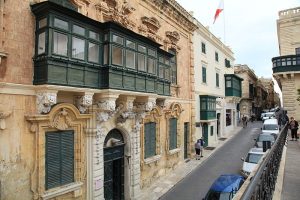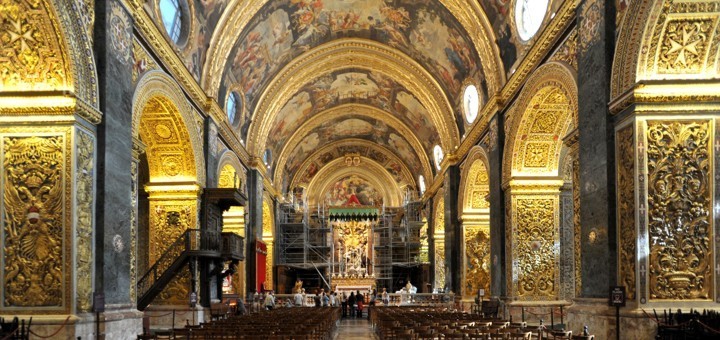Culture: Malta’s unmissable Baroque architecture
We take a look at some of the most iconic Baroque architecture on the island
Since the turn of the 19th century, Malta has only known existence under the wing of the British Empire and, since 1964, as an independent state.
However, whilst British colonial rule and modern-day independence have both left a long-term cultural impact on the nation, its language and its politics, it is perhaps the reign of the Order of St John that is to thank for some of the classic architectural structures that Malta is world famous for.
The Order of St John held power in Malta between 1530 and 1798 as part of the Kingdom of Sicily, settling permanently on the island following the great siege of 1565 and building the capital of Valletta.
Whilst the Order of St John may have been renowned for oppressive law-making and religious zealousness, the knights have left a formidable array of Baroque architectural designs that are visited by millions of tourists annually.
In homage to the order’s influential architecture, we consider the leading Baroque designs that we highly recommend you go visit during your time on the island.
Conventual Church of St John
The Co-Church of St John was commissioned by Grand Master Jean de la Cassière and built between 1573 and 1577.
Designed by Maltese architect Girolamo Cassar, the church was initially of modest decoration before being redesigned by the Italian artist Mattia Preti in the 17th century, who took Malta as his adopted homeland.
Home to two masterpieces produced by the world-famous another Italian artist, Michelangelo Caravaggio, the Co-Church of St John is recognised as one of the finest living examples of Baroque high architecture in Europe.
Still an active church, the Cathedral is one of Malta’s most popular tourist attractions. Opening hours are between 9:30 and 16:30 on weekdays and 09:30 and 12:30 on Saturdays, should you be interested in experiencing this architectural brilliance for yourself.
Visit their website for more details.
Palazzo Vilhena
Built in 1726, Palazzo Vilhena is a prime example of French Baroque design created by the architect Charles François de Mondion.
Commissioned by Grand Master Antonio Manoel de Vilhena, the Mdina-based palace boasts ornate doorways and windows, accompanied by grand Corinthian columns, beautiful archways and a painstakingly crafted design of the De Vilhena coat of arms.
Nowadays, the palace is home to the National Museum of Natural History and plays host to a variety of exhibits that cover topics including Maltese Geology and Palaeontology.
If you would like to visit the Palace then tickets are available for a maximum price of €5.00 per person, with reductions for the senior citizens, youth visitors and children.
St. Paul's Cathedral in Mdina
Home to a painstakingly crafted and truly awe inspiring frescoed interior, St. Paul’s Cathedral is quite simply a must visit if you’re looking to drink in the rich Baroque designs that the island has to offer.
Originally founded in the 12th Century, the cathedral was rebuilt in 1696 by the Maltese architect Lorenzo Gafà following severe damage inflicted by an earthquake.
The work of the Maltese artist Francesco Zahra covers the ceiling of the Chapter’s Hall and the small domes of the Blessed Sacrament and Holy Relics chapels whilst the outstanding frescoes were added by the Sicilian brothers Vincenzo, Antonio and Francesco Manno in the 1790s and depict stories of the life of St Paul.
The ceiling of the cupola which was entrusted to the artist Giovanni Gallucci, in the 1860s.
Auberge de Castille
Auberge de Provence was built in the 1570s, again to the designs of the Maltese architect Girolamo Cassar, before being extensively renovated in the 17th century with the new façade created by Mederico Blondel.
The Auberge served as a location for the Knights of St. John to hold meetings and banquets until their expulsion from the island by the Napoleonic Empire.
This location is heralded for its famous Grand Salon, which exhibits fine examples of the richly painted walls and wooden beamed ceilings that are synonymous with many Baroque designs.
Nowadays, the Auberge is home to the Museum of Archaeology and hosts an extensive range of artefacts dating back to Malta’s Neolithic period, making it a wonderful location to explore the islands deep history.
You can learn more from their website.
And if you're in Valletta then check out the city's must-see attractions
Hostel de Verdelin
The Hostel de Verdelin was built in the 1650s for the Knight of the Order of St John for Jean-Jacques de Verdelin, who originated from France and held several high profile roles within the order.
The premises are believed to have been designed by the revered Italian architect Francesco Buonamici, who is accredited by some sources as having brought the Baroque movement to the Maltese islands.
Most of the Hostel de Verdelin now serves as a Police station, however, the restaurant Michael's is also situated on the premises – giving you the opportunity to dine in a building that hold's an iconic place in the history of Valletta.
The Hostel de Verdelin is arguably worth visiting for the unusual fact that it is a rare example of Spanish Baroque design in Malta, where Italian or French Baroque are traditionally more commonplace.


